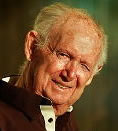CAFÉ SOCIETY
Greenwich Village, NY
FBI Director J. Edgar Hoover opens a file on one Leon Josephson, recently expelled from the American Communist Party for his unsanctioned participation in an attempt to assassinate Hitler in 1933. Leon backs a radical new nightclub to fulfill the dream of his younger brother, Barney. The cabaret in Greenwich Village features jazz, social satire and integration between blacks and whites for the first time in the country. Hoover determines to neutralize social activism and see to the demise of Barney's Café Society.
Trenton shoe salesman Barney Josephson visits 1930s Berlin where he delights in cabarets that feature satirical comics who cleverly lampoon the political climate. It worlds apart from the predictable nightclub fare of New York, where the mob runs most clubs. Barney wants to create a new kind of nightspot featuring jazz, top-notch talent and comedians with a topical bent. It will also integrate both sides of the footlights.
This revolutionary idea becomes reality in 1938 when Café Society opens in Greenwich Village at 2 Sheridan Square. With the aid of Columbia Records producer John Hammond, opening night features cutting edge jazz musicians, comic/MC Jack Gilford, and Billie Holiday, who later debuts “Strange Fruit” here. Barney goes on to showcase such talent as Lena Horne, Zero Mostel, Imogene Coca, Alberta Hunter, Big Joe Turner, Count Basie and many, many others.
The club pulls in mostly artists, students and workers but not profits, so Barney opens another, swankier club on Park Avenue and 58th Street that attracts the mink stole and tuxedo crowd. He pays off his debts on both clubs in 11 weeks. After the war, while other clubs flounder, the two Café Societys are wildly profitable with quality talent -- meccas to celebrities and the wealthy, as well as to the working class, students and intelligentsia.
Mixing the races is too radical for some who visit the club or read the gossip columns. Ugly incidents occur regularly. For others, the Café Society success is subversive. The fast-changing political climate of the postwar ’40s threatens Barney and those close to him, especially the forceful and underhanded tactics by both Hoover and the House Un-American Activities Committee. HUAC summons Barney to testify against brother Leon, and the FBI wages a harassment campaign, photographing all who enter and leave his two clubs. Soon, intimidated customers stay away. By 1950, the two clubs are dark.
In the struggle for equality and justice in America, this was one battle partly lost. But it was also partly won, for Café Society Uptown and Downtown directly influenced two decades of American popular culture and was the first to integrate both audience and stage.
Coda:
Though Barney Josephson’s daring experiment ends, he vows to have another club someday. Years later he opens the Cookery, again in Greenwich Village. There he reintroduces retired performers, such as Big Joe Turner and Alberta Hunter, to new audiences and renewed popularity. The packed-room performances are broadcast and become bestsellers in record stores. The Cookery is Barney Josephson’s fitting swan song as one of New York's most original and daring impresarios.
John Byrd: ByrdNest4@verizon.net
back to the mural
©SydHoff.org 2012


